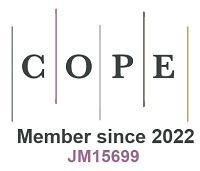REFERENCES
1. Chen, J.; Sun, W.; Wang, Y.; Fang, W. Performant Au hydrogenation catalyst cooperated with Cu-doped Al2O3 for selective conversion of furfural to furfuryl alcohol at ambient pressure. Green. Energy. Environ. 2021, 6, 546-56.
2. Sun, W.; Wu, S.; Lu, Y.; Wang, Y.; Cao, Q.; Fang, W. Effective control of particle size and electron density of Pd/C and Sn-Pd/C nanocatalysts for vanillin production via base-free oxidation. ACS. Catal. 2020, 10, 7699-709.
3. Wei, Z.; Li, X.; Deng, J.; Wang, J.; Li, H.; Wang, Y. Improved catalytic activity and stability for hydrogenation of levulinic acid by Ru/N-doped hierarchically porous carbon. Mol. Catal. 2018, 448, 100-7.
4. Yoshida, R.; Sun, D.; Yamada, Y.; Sato, S. Stable Cu-Ni/SiO2 catalysts prepared by using citric acid-assisted impregnation for vapor-phase hydrogenation of levulinic acid. Mol. Catal. 2018, 454, 70-6.
5. Gadamsetti, S.; Mathangi, N.; Hussain, S.; Kumar, V. V.; Chary, K. V. R. Vapor phase esterification of levulinic acid catalyzed by
6. Liguori, F.; Moreno-marrodan, C.; Barbaro, P. Environmentally friendly synthesis of γ-valerolactone by direct catalytic conversion of renewable sources. ACS. Catal. 2015, 5, 1882-94.
7. Wang, Y.; Gai, Y.; Li, Y.; Li, C.; Li, Z.; Wang, X. SARS-CoV-2 has the advantage of competing the iMet-tRNAs with human hosts to allow efficient translation. Mol. Genet. Genomics. 2021, 296, 113-8.
8. Zhao, D.; Wang, Y.; Delbecq, F.; Len, C. Continuous flow conversion of alkyl levulinates into γ-valerolactone in the presence of Ru/C as catalyst. Mol. Catal. 2019, 475, 110456.
9. Cao, W.; Lin, L.; Qi, H.; et al. In-situ synthesis of single-atom Ir by utilizing metal-organic frameworks: an acid-resistant catalyst for hydrogenation of levulinic acid to γ-valerolactone. J. Catal. 2019, 373, 161-72.
10. Li, W.; Cai, Z.; Li, H.; et al. Hf-based metal organic frameworks as bifunctional catalysts for the one-pot conversion of furfural to γ-valerolactone. Mol. Catal. 2019, 472, 17-26.
11. Wettstein, S. G.; Bond, J. Q.; Alonso, D. M.; Pham, H. N.; Datye, A. K.; Dumesic, J. A. RuSn bimetallic catalysts for selective hydrogenation of levulinic acid to γ-valerolactone. Appl. Catal. B. Environ. 2012, 117-8, 321-9.
12. Tan, J.; Cui, J.; Cui, X.; et al. Graphene-modified Ru nanocatalyst for low-temperature hydrogenation of carbonyl groups. ACS. Catal. 2015, 5, 7379-84.
13. Song, S.; Yao, S.; Cao, J.; et al. Heterostructured Ni/NiO composite as a robust catalyst for the hydrogenation of levulinic acid to γ-valerolactone. Appl. Catal. B. Environ. 2017, 217, 115-24.
14. Huang, X.; Liu, K.; Vrijburg, W. L.; et al. Hydrogenation of levulinic acid to γ-valerolactone over Fe-Re/TiO2 catalysts. Appl. Catal. B. Environ. 2020, 278, 119314.
15. Filho, J. B.; Rios, R. D.; Bruziquesi, C. G.; et al. A promising approach to transform levulinic acid into γ-valerolactone using niobic acid photocatalyst and the accumulated electron transfer technique. Appl. Catal. B. Environ. 2021, 285, 119814.
16. Abdelrahman, O. A.; Heyden, A.; Bond, J. Q. Analysis of kinetics and reaction pathways in the aqueous-phase hydrogenation of levulinic acid to form γ-valerolactone over Ru/C. ACS. Catal. 2014, 4, 1171-81.
17. Lomate, S.; Sultana, A.; Fujitani, T. Vapor phase catalytic transfer hydrogenation (CTH) of levulinic acid to γ-valerolactone over copper supported catalysts using formic acid as hydrogen source. Catal. Lett. 2018, 148, 348-58.
18. Hao, P.; Schwartz, D. K.; Medlin, J. W. Effect of surface hydrophobicity of Pd/Al2O3 on vanillin hydrodeoxygenation in a water/oil system. ACS. Catal. 2018, 8, 11165-73.
19. Mostofian, B.; Cai, C. M.; Smith, M. D.; et al. Local phase separation of co-solvents enhances pretreatment of biomass for bioenergy applications. J. Am. Chem. Soc. 2016, 138, 10869-78.
20. Pera-Titus, M.; Leclercq, L.; Clacens, J. M.; De, C. F.; Nardello-Rataj, V. Pickering interfacial catalysis for biphasic systems: from emulsion design to green reactions. Angew. Chem. Int. Ed. Engl. 2015, 54, 2006-21.
21. Lan, Y.; He, H.; Liu, C.; et al. Ultrasmall Pd nanocrystals confined into co-based metal organic framework-decorated MXene nanoarchitectures for efficient methanol electrooxidation. J. Power. Sources. 2024, 603, 234438.
22. Kim, J.; Han, J. Simulation study of a strategy to produce gamma-valerolactone from ethyl levulinate. Energy 2018, 163, 986-91.
23. Vu, H. T.; Harth, F. M.; Wilde, N. Silylated zeolites with enhanced hydrothermal stability for the aqueous-phase hydrogenation of levulinic acid to γ-valerolactone. Front. Chem. 2018, 6, 143.
24. Mizugaki, T.; Nagatsu, Y.; Togo, K.; et al. Selective hydrogenation of levulinic acid to 1,4-pentanediol in water using a hydroxyapatite-supported Pt–Mo bimetallic catalyst. Green. Chem. 2015, 17, 5136-9.
25. Nemanashi, M.; Noh, J.; Meijboom, R. Hydrogenation of biomass-derived levulinic acid to γ-valerolactone catalyzed by mesoporous supported dendrimer-derived Ru and Pt catalysts: an alternative method for the production of renewable biofuels. Appl. Catal. A. Gen. 2018, 550, 77-89.
26. Al-naji, M.; Popova, M.; Chen, Z.; Wilde, N.; Gläser, R. Aqueous-phase hydrogenation of levulinic acid using formic acid as a sustainable reducing agent over Pt catalysts supported on mesoporous zirconia. ACS. Sustain. Chem. Eng. 2020, 8, 393-402.
27. Serrano-ruiz, J. C.; Wang, D.; Dumesic, J. A. Catalytic upgrading of levulinic acid to 5-nonanone. Green. Chem. 2010, 12, 574.
28. He, J.; Li, H.; Xu, Y.; Yang, S. Dual acidic mesoporous KIT silicates enable one-pot production of γ-valerolactone from biomass derivatives via cascade reactions. Renew. Energy. 2020, 146, 359-70.
29. Winoto, H. P.; Ahn, B. S.; Jae, J. Production of γ-valerolactone from furfural by a single-step process using Sn-Al-beta zeolites: optimizing the catalyst acid properties and process conditions. J. Ind. Eng. Chem. 2016, 40, 62-71.
30. Liu, L.; Corma, A. Metal catalysts for heterogeneous catalysis: from single atoms to nanoclusters and nanoparticles. Chem. Rev. 2018, 118, 4981-5079.
31. Vinokurov, V.; Glotov, A.; Chudakov, Y.; et al. Core/shell ruthenium–halloysite nanocatalysts for hydrogenation of phenol. Ind. Eng. Chem. Res. 2017, 56, 14043-52.
32. Jiang, W.; Cao, J.; Zhu, C.; et al. Catalytic hydrogenation of aromatic ring over ruthenium nanoparticles supported on α-Al2O3 at room temperature. Appl. Catal. B. Environ. 2022, 307, 121137.
33. Bavykina, A.; Kolobov, N.; Khan, I. S.; Bau, J. A.; Ramirez, A.; Gascon, J. Metal-organic frameworks in heterogeneous catalysis: recent progress, new trends, and future perspectives. Chem. Rev. 2020, 120, 8468-535.
34. Yang, Q.; Xu, Q.; Jiang, H. L. Metal-organic frameworks meet metal nanoparticles: synergistic effect for enhanced catalysis. Chem. Soc. Rev. 2017, 46, 4774-808.
35. Mukoyoshi, M.; Kitagawa, H. Nanoparticle/metal-organic framework hybrid catalysts: elucidating the role of the MOF. Chem. Commun. 2022, 58, 10757-67.
36. Shearer, G. C.; Chavan, S.; Bordiga, S.; Svelle, S.; Olsbye, U.; Lillerud, K. P. Defect engineering: tuning the porosity and composition of the metal–organic framework UiO-66 via modulated synthesis. Chem. Mater. 2016, 28, 3749-61.
37. Xu, W.; Zhang, Y.; Wang, J.; et al. Defects engineering simultaneously enhances activity and recyclability of MOFs in selective hydrogenation of biomass. Nat. Commun. 2022, 13, 2068.
38. Long, J.; Yao, Q.; Zhang, X.; Wu, H.; Lu, Z. Defects engineering of metal-organic framework immobilized Ni-La(OH)3 nanoparticles for enhanced hydrogen production. Appl. Catal. B. Environ. 2023, 320, 121989.
39. Wang, W.; Sheng, T.; Chen, S.; et al. Defect engineering of metal-organic framework for highly efficient hydrodeoxygenation of lignin derivates in water. Chem. Eng. J. 2023, 453, 139711.
40. Cui, Y.; Cui, X.; Yang, G.; et al. High CO2 adsorption of ultra-small Zr-MOF nanocrystals synthesized by modulation method boosts the CO2/CH4 separation performance of mixed-matrix membranes. J. Membr. Sci. 2024, 689, 122174.
41. Zhao, X.; Sun, L.; Zhai, Z.; et al. An ultrastable La-MOF for catalytic hydrogen transfer of furfural: in situ activation of the surface. Nanoscale 2023, 15, 6645-54.
42. Zhang, J.; Li, C.; Chen, X.; et al. Promotional effects of magnesia on catalytic performance of Pt/SiO2 in hydrogenolysis of dibenzofuran. J. Catal. 2019, 371, 346-56.
43. Zhang, H.; Wang, J.; Zhang, Y.; et al. A study on H2-TPR of Pt/Ce0.27Zr0.73O2 and Pt/Ce0.27Zr0.70La0.03Ox for soot oxidation. Appl. Surf. Sci. 2016, 377, 48-55.
44. Qiao, B.; Wang, A.; Yang, X.; et al. Single-atom catalysis of CO oxidation using Pt1/FeOx. Nat. Chem. 2011, 3, 634-41.
45. Pozdnyakova, O.; Teschner, D.; Wootsch, A.; et al. Preferential CO oxidation in hydrogen (PROX) on ceria-supported catalysts, part I: oxidation state and surface species on Pt/CeO2 under reaction conditions. J. Catal. 2006, 237, 1-16.
46. Cheah, S. K.; Bernardet, V. P.; Franco, A. A.; Lemaire, O.; Gelin, P. Study of CO and hydrogen interactions on carbon-supported Pt nanoparticles by quadrupole mass spectrometry and operando diffuse reflectance FTIR spectroscopy. J. Phys. Chem. C. 2013, 117, 22756-67.
47. Gupta, S. S. R.; Kantam, M. L. Selective hydrogenation of levulinic acid into γ-valerolactone over Cu/Ni hydrotalcite-derived catalyst. Catal. Today. 2018, 309, 189-94.








